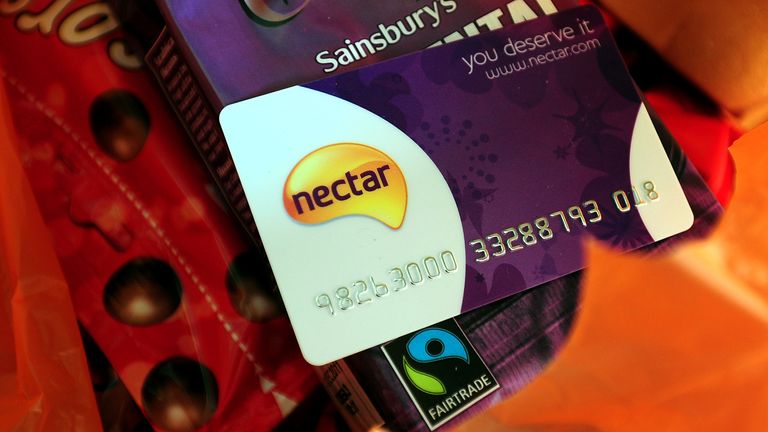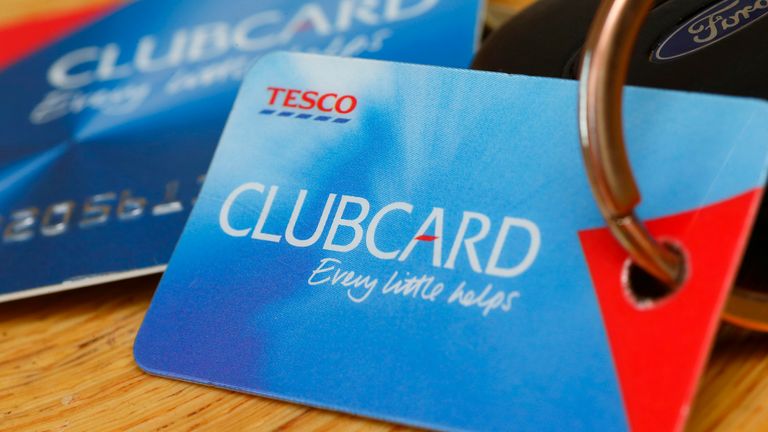Customer loyalty schemes at Sainsbury’s and Tesco are “not all they’re cracked up to be” with regular prices being inflated so promotions look better than they really are, according to a consumer champion.
Which? says the supermarket giants are using “potentially dodgy tactics” and has shared the findings of its investigation with the Competition and Markets Authority.
But the retailers have disputed the claims – arguing it had failed to take inflation into account, and Trading Standards rules had been followed.
Which? said it had tracked more than 140 Clubcard and Nectar card prices at Tesco and Sainsbury’s over six months.
About 29% of member-only promotions were at their so-called regular price for less than half of that period.
Which? identified three main problems around the regular price quoted for products on offer to customers with loyalty cards – that they were far more expensive than at other supermarkets, that they had been changed right before the promotion, or were only available for a short amount of time.
The research is part of the watchdog’s inquiry into the increasingly widespread use of loyalty card schemes across supermarkets, which only gives customers who are signed up access to the lower tier of pricing.
Among the deals of concern to Which? was a jar of Nescafé Gold Blend Instant Coffee (200g) advertised at Sainsbury’s for £6 with a Nectar card – a saving of £2.10 on the “regular” price of £8.10.
But the regular price had also been £6 at Sainsbury’s until it went up to £8.10 just two days before the Nectar price launched.
Which? also found the regular Sainsbury’s price was significantly higher than at other supermarkets, such as Asda, where the same jar cost £7, or at Morrisons, Ocado and Waitrose where it was available for £6.
It was even cheaper at Tesco (£5.99) and at Lidl (£5.49).
Read more:
One in four UK universities operating food banks for students
Older voters will back policies aimed at younger people – study
In another example, Which? found Heinz Salad Cream (605g) at Tesco with a Clubcard price of £3.50 and a regular price of £3.90 – even though its regular price had been £2.99 for several weeks before it was increased to £3.90, 22 days before the Clubcard promotion.
Which? found the condiment has been its regular price for just 25 days out of 183, or 14% of the previous six months.
Overall, Which? found a third of the products at Sainsbury’s (34% of 71 products) were the “regular” price less than half the time over the previous six months.
At Tesco, the same was true for 24% of the 70 items analysed.
Which? said: “Tesco and Sainsbury’s are using potentially dodgy tactics on some of their loyalty offers which can give the impression that savings are more substantial than they really are.”
‘Flawed methodology’
A Sainsbury’s spokeswoman said: “Which? fails to recognise that base prices have been increasing throughout the year due to inflation. Our promotional rules around Nectar Prices are informed by the guidance from Trading Standards.
“The Nescafe Gold example demonstrates Which?’s flawed methodology as the claim that the ‘regular’ price was £6 is untrue.
“The base price of this item has been £8.10 since December 2022 and £6 was a promotional price throughout this year, including on Nectar Prices when it launched in April.”
A Tesco spokesman said: “All our Clubcard Price promotions follow strict rules, including considering how they compare against prices in the market, to ensure they represent genuine value and savings for our Clubcard members.
“These rules have been endorsed by our Trading Standards Primary Authority.”
Sue Davies, Which? head of food policy, said: “It’s not surprising that shoppers are questioning whether supermarket loyalty card prices are really a good deal, as our investigation shows that up to a third of loyalty offers at Tesco and Sainsbury’s are not all they’re cracked up to be.
“Which? is calling on supermarkets to make sure that their loyalty card prices don’t mislead and for the regulator to look more closely at this growing trend towards dual pricing. There is also the important issue of whether it is right for certain groups to be excluded from member-only schemes.”


